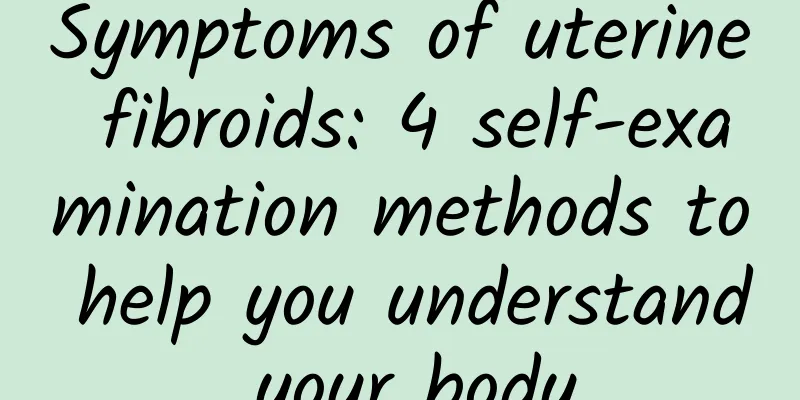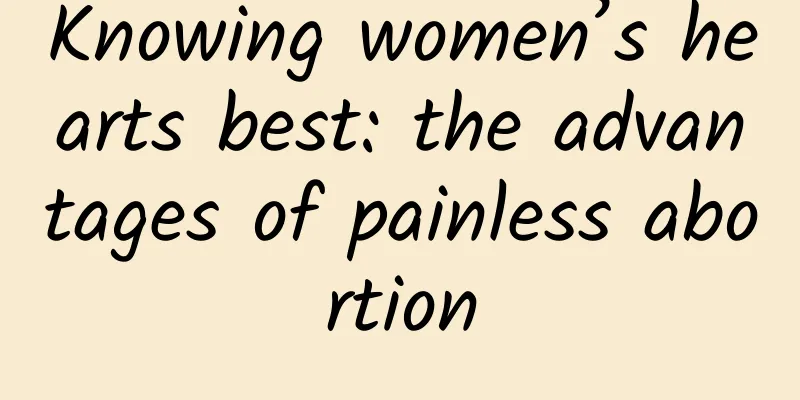Symptoms of uterine fibroids: 4 self-examination methods to help you understand your body

|
For female friends, uterine fibroids are a relatively common gynecological disease. The main patient group is women in their childbearing period. Uterine fibroids can cause many other gynecological diseases, such as cervicitis, pelvic inflammatory disease, adnexitis, etc. In severe cases, it can also affect fertility. The chance of uterine fibroids becoming cancerous is very small, about 0.5%. There are signs that women suffer from uterine fibroids. Although the uterus is inside the body, there will still be some symptoms. Let's take a look at the symptoms of uterine fibroids . reason Doctors do not know what causes uterine fibroids, but research and clinical experience suggest that: Genetic changes. Many fibroids contain genetic changes that are different from normal uterine muscle cells. Hormones. Estrogen and progesterone, two hormones that stimulate the development of the uterine lining during each menstrual cycle in preparation for pregnancy, appear to promote the growth of fibroids. Fibroids have more estrogen and progesterone receptors than normal uterine muscle cells. Fibroids tend to shrink after menopause because of the decrease in hormone production. Other growth factors. Substances that help the body maintain tissue, such as insulin-like growth factor, may influence the growth of fibroids. Doctors believe that uterine fibroids form from stem cells in the smooth muscle tissue (myometrium) of the uterus. The individual cells divide repeatedly, eventually forming a firm, rubbery mass that is different from nearby tissue. Uterine fibroids have different growth patterns - they may grow slowly or quickly, or they may stay the same size. Some fibroids grow quickly, while others shrink on their own. Many fibroids that appear during pregnancy shrink or disappear after pregnancy because the uterus returns to its normal size. Risk factors There are few known risk factors for uterine fibroids, except in women of childbearing age. Other factors that influence the development of fibroids include: Heredity. If your mother or sister has fibroids, you are at an increased risk of developing them. Race. Black women are more likely to develop fibroids than women of other races. Also, black women develop fibroids at a younger age, and they are also more likely to develop more or larger fibroids. Environmental factors. Starting menstruation at an early age; using birth control; being obese; being vitamin D deficient; eating a diet high in red meat and low in green vegetables, fruits, and dairy products; and drinking alcohol, including beer, appear to increase your risk of developing fibroids. complication Although uterine fibroids are not usually dangerous, they can cause discomfort and may lead to complications, such as anemia from severe blood loss. Pregnancy and fibroids Fibroids do not usually affect pregnancy. However, fibroids—especially submucosal fibroids—may cause infertility or pregnancy loss. Fibroids may also increase the risk of certain pregnancy complications, such as placental abruption, fetal growth restriction, and premature birth. Symptoms of uterine fibroids 1. Lower abdominal mass. In the early stage of uterine fibroids, the mass is still very small and cannot be felt in the abdomen. As the disease progresses, the fibroid will gradually grow larger. After about 3 months, it can be felt in the abdomen. When the fibroid grows larger, it may protrude from the vagina. 2. Menstrual irregularities Women sometimes experience a sudden increase in menstrual flow or a prolonged menstrual period during their menstrual period. These are manifestations of uterine fibroids. Fibroids can cause the uterus to grow larger and cause congestion and expansion of the endometrium. This can cause a prolonged menstrual period and an increase in menstrual flow. In severe cases, there may also be symptoms of irregular bleeding. 3. Increased leucorrhea. Uterine fibroids can cause increased endometrial secretion, which can cause congestion in the pelvic cavity and increase leucorrhea. 4. Feeling of oppression. When uterine fibroids grow larger, they will compress the bladder, causing frequent urination, urgency, or difficulty urinating. If it is a fibroid on the posterior wall of the uterus, it will compress the lower abdomen, causing swelling and constipation. |
<<: Will uterine fibroids disappear after pregnancy?
>>: What medicine can cure small uterine fibroids? Take these 3 medicines now
Recommend
The impact of multiple uterine fibroids on the body The harm of multiple uterine fibroids
Uterine fibroids are the most common tumors in th...
Analysis of the precautions for the first menstruation after abortion
After an abortion, you should take proper rest an...
Experts explain the important causes of cervicitis
Cervicitis is a gynecological disease that is ver...
Trade interests vs. safety: debate over Clenbuterol in public hearing
The Department of Health plans to propose a draft...
What are the symptoms of ovarian cysts in women?
There are many female genital diseases, one of wh...
Is it normal to have menstruation every 20 days at the age of 40?
Is it normal to have menstruation every 20 days a...
Tell you what are the main symptoms of uterine fibroids
Among the many gynecological diseases, uterine fi...
How to cure Bartholinitis
How to cure Bartholinitis? Bartholinitis is the i...
Yang Yizhan exercises without limits and shows off his muscles by skipping rope
Yang Yizhan, the warm-hearted urban man with a he...
Several common symptoms of dysmenorrhea in women
Many female friends do not understand the symptom...
Are pelvic inflammatory disease and cervicitis the same thing? Two different conditions
The classification of gynecological inflammation ...
Treatment of irregular menstruation of liver depression and qi stagnation type with Chinese herbal decoction
Aunt Lin, 47, has an enviable career, but a regre...
Is chocolate cyst puncture painful?
Is chocolate cyst puncture painful? Chocolate cys...
How to treat uterine fibroids best
There is no such thing as "the best way to t...
What are the dietary taboos for patients with cervicitis? Women with cervicitis should pay attention to these dietary taboos
Cervicitis is a common gynecological disease, mos...









